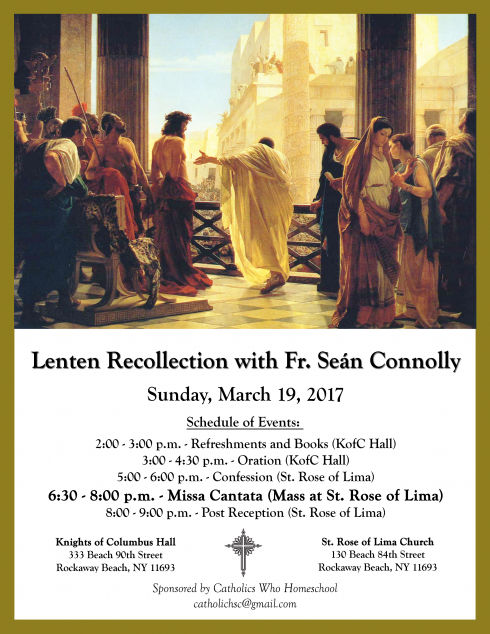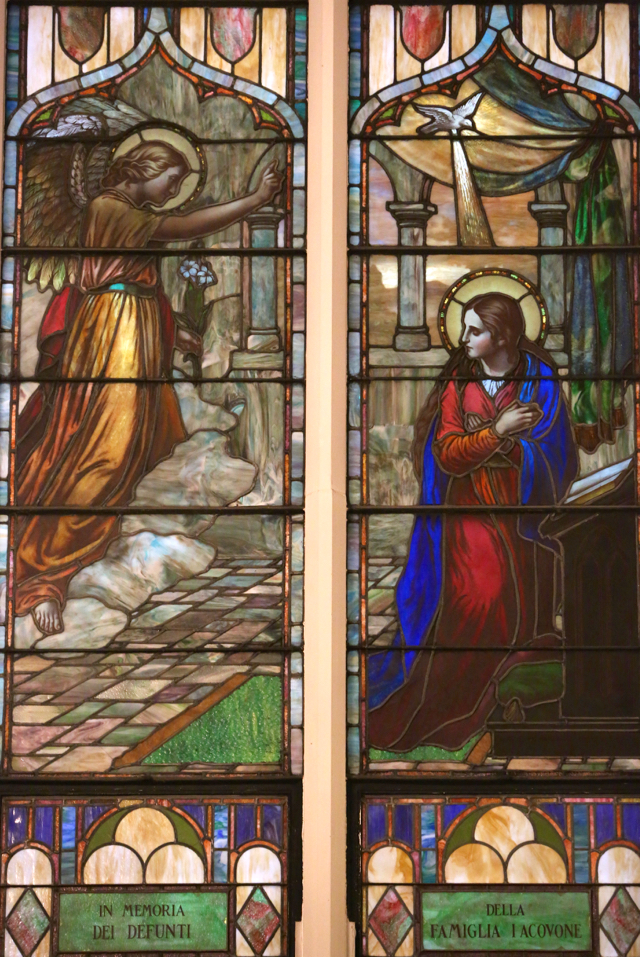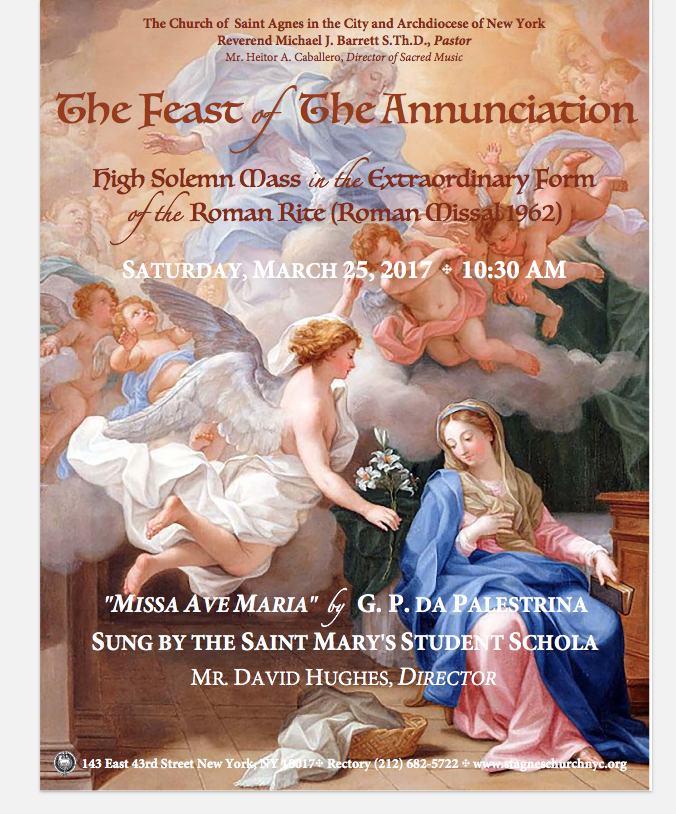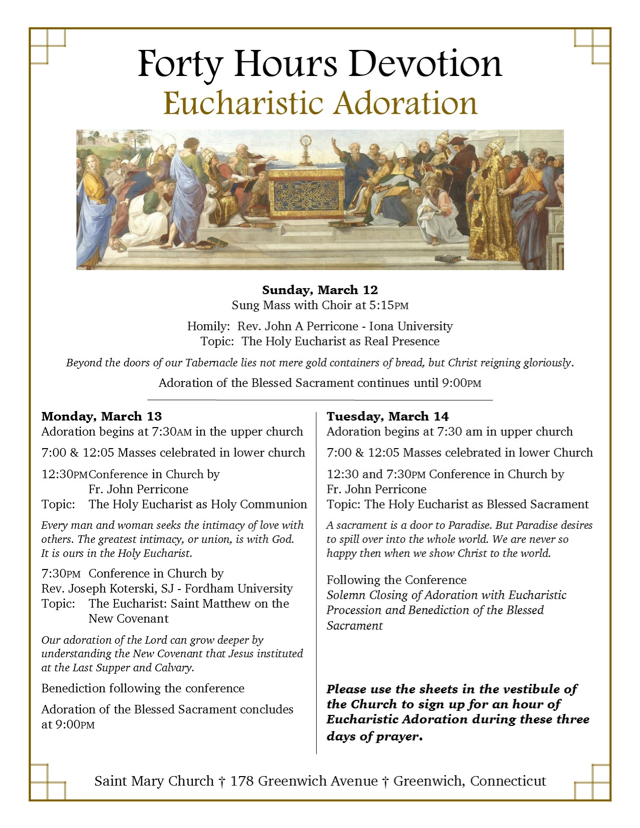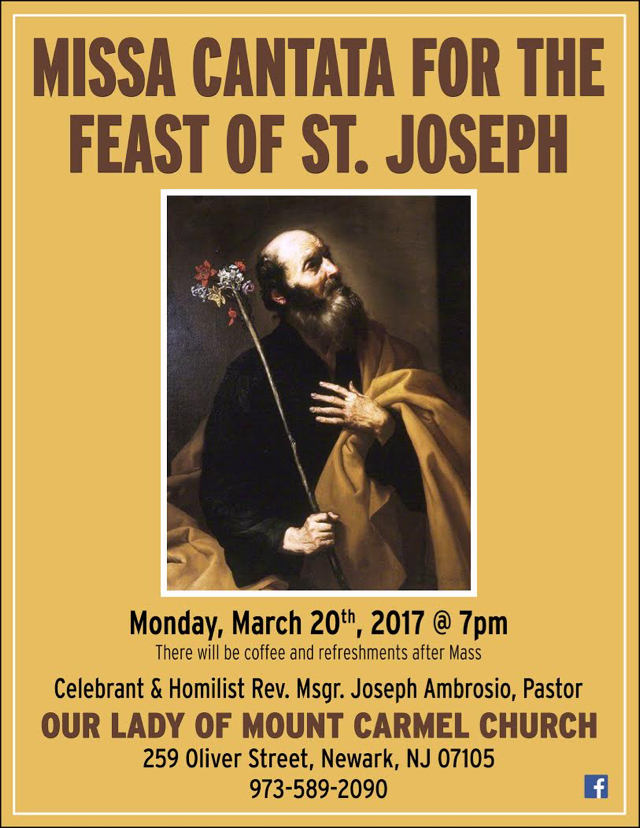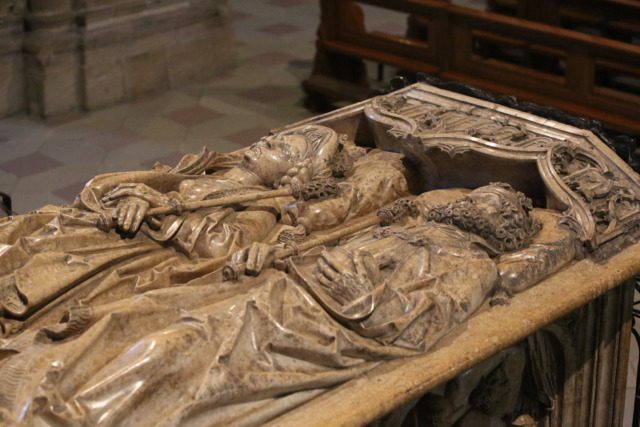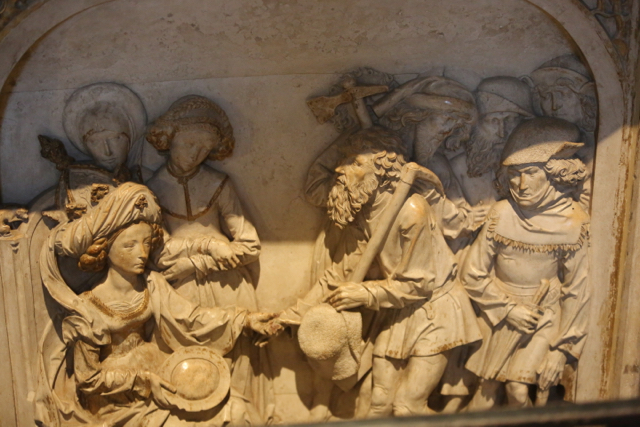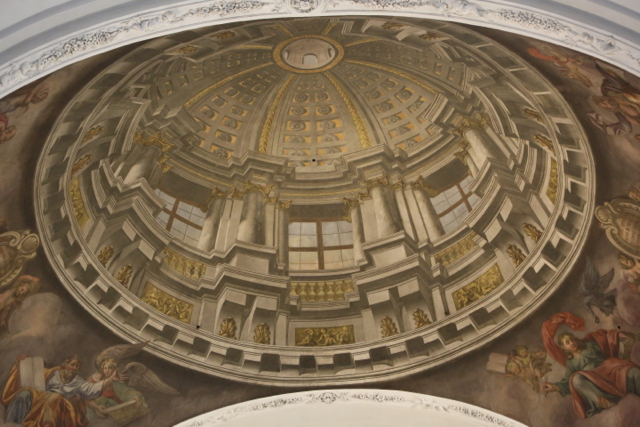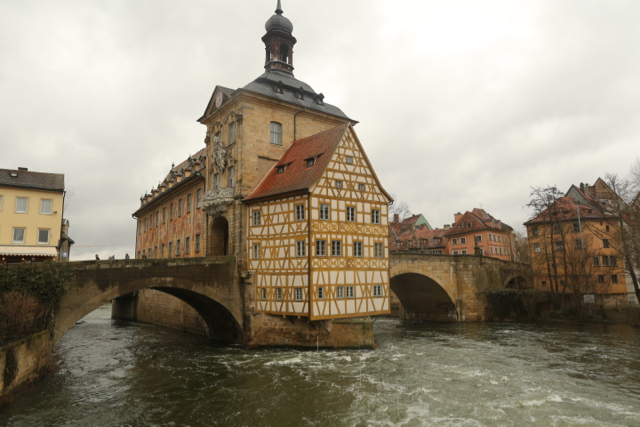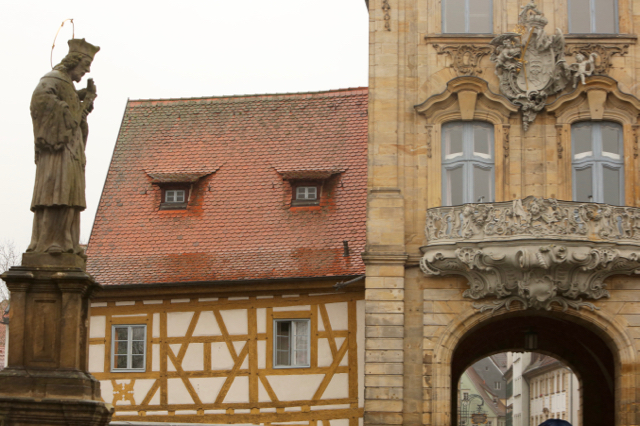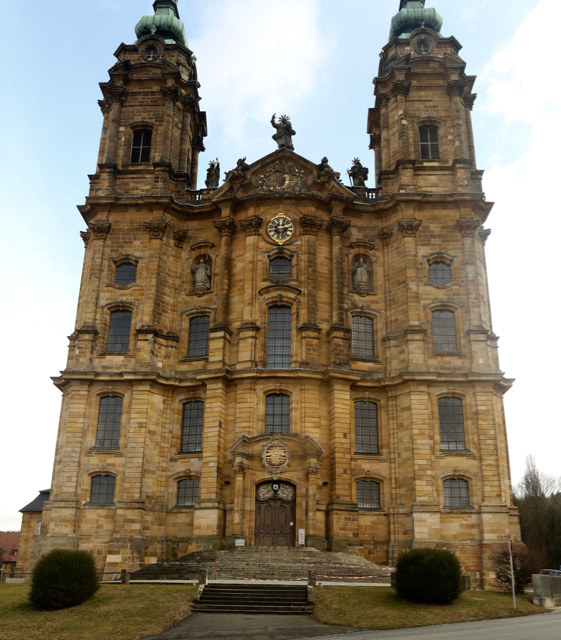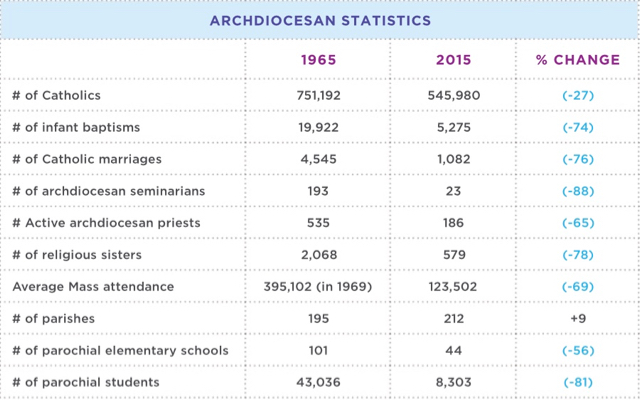12
Mar
Lenten Recollection in Queens
Posted by Stuart Chessman10
Mar
On Friday, March 17, 4 pm, at St. Agnes Cathedral in Rockville Center, NY, Fr. Ryan Creamer will offer a Sung High Mass (1962 Missal) on the feria Friday in Lent, the Commemoration of St. Patrick, Bishop and Confessor (III Classis). Organized and sponsored by the Sursum Corda Society.
10
Mar
N.B. The stained glass window is in Our Lady of Peace Church in Manhattan. The church was recently leased to a coptic orthodox parish.
The following churches will offer traditional masses on the Feast of the Annunciation on Saturday, March 25. Please let us know about masses in the area that we have not yet posted.
St. Mary Church, Greenwich, CT, 11 am, Solemn Pontifical Mass at the Throne, His Emminence Raymond Cardinal Burke, celebrant.
St. Mary Church, Norwalk, CT, 9 am.
St. Agnes Church, New York, Solemn Mass, 10:30 am. Fr. Jeff Langan as Celebrant, Fr. Christopher Cullen as Deacon, and Fr. Michael Barrett as Homilist. “Missa Ave Maria” by Palestrina, sung by the Student Schola Cantorum of St. Mary Church, Norwalk, David Hughes director.
Our Lady of Mount Carmel, New York. On Friday, March 24, 2017, beginning at 7 PM, an All Night Vigil of Adoration before the Blessed Sacrament for Nascent Life. Saturday, March 25, 2017 at 5 AM in the morning, candlelit Golden Mass (Missa Aurora – Mass at Dawn) for the Feast of the Annunciation and Incarnation. More details
Church of the Holy Innocents, New York, Missa Cantata, 1PM.
St. Anthony of Padua, Jersey City, Missa Cantata, 11 am.
Other Events on March 25:
Lenten Morning of Recollection, St Christopher Church, 11 Gale Avenue, Baldwin, Nassau County, New York, 8:30 am – 12:30 pm, more details
Art of the Beautiful Series Lecture by Dr. Evelyn Birge Vitz “Beauty, Piety, and Delight in Medieval Literature” 7:30 PM, at the Catholic Center, NYU. Dr. Vitz is Professor of French, and Affiliated Professor of Comparative Literature, Medieval and Renaissance Studies, and Religious Studies at New York University. The Lecture will be followed by a reception and sung Compline. The Catholic Center at NYU is located at 238 Thompson St, New York. Sponsored by the Catholic Artists Society.
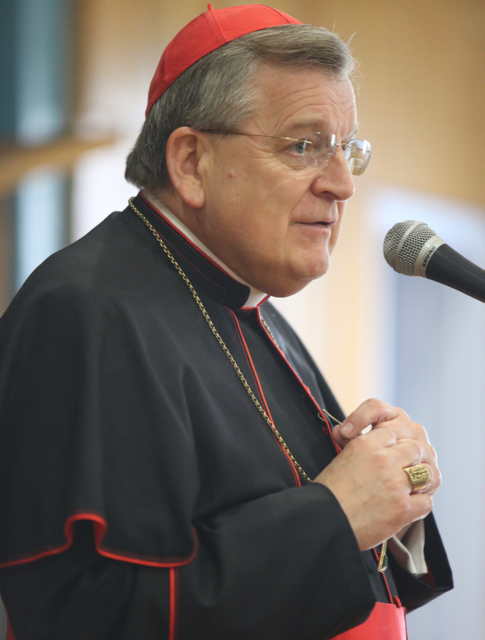
His Emminence Raymond Cardianal Burke will celebrate a Solemn Pontifical Mass in Greenwich
10
Mar
This coming week, St. Mary’s Church in Greenwich will hold Forty Hours Devotion. Fr. John Perricone and Fr. Joseph Koterski will give conferences.
9
Mar
9
Mar
March 25: Lecture By Dr. Evelyn Birge Vitz
Beauty, Piety, and Delight in Medieval Literature
The next lecture in the Art of the Beautiful Series is March 25, 7:30 PM, at the Catholic Center, NYU. Dr. Evelyn (Timmie) Birge Vitz will speak about “Beauty, Piety, and Delight in Medieval Literature.”
A Professor of French, and Affiliated Professor of Comparative Literature, Medieval and Renaissance Studies, and Religious Studies at New York University, Dr. Vitz is the author of many articles and books, including Medieval Narrative and Modern Narratology and A Continual Feast, a scholarly cookbook. She speaks widely on topics such as Christianity, family life, and gender.
The Lecture will be followed by a reception and sung Compline. Don’t miss it! Bring a friend!
The Catholic Center at NYU is located at 238 Thompson St, New York.
The following schedule of Traditional Masses will be offered at Our Lady of Mount Carmel Pontifical Shrine, 448 East 116th Street, New York, NY
Sung Mass – Feast of Saint Joseph
On Monday, March 20 at 8 PM in the evening, we will have a Sung Mass 1962 Missale Romanum in the Extraordinary Form for the Feast of Saint Joseph, husband of the Blessed Virgin Mary and Patron of the Universal Church. The Holy Rosary will be prayed at 7:30 PM.
https://www.facebook.com/events/224295421370651/
Vigil for Nascent Life and Golden Mass for the Feast of the Annunciation and Incarnation
On Friday, March 24, 2017, beginning at 7 PM, we will have an All Night Vigil of Adoration before the Blessed Sacrament for Nascent Life. As we bring forth our prayers, praises and petitions before the Altar of Our Lord, we pray in a special way for the Respect of all Human Life from Conception to Natural Death in the midst of the abortion capital of our nation.
On Saturday, March 25, 2017 at 5 AM in the morning, we will celebrate the Golden Mass (Missa Aurora – Mass at Dawn) for the Feast of the Annunciation and Incarnation. This Mass will be offered for the conversion of our country and for an end to the grave evil of abortion. This Candlelight Mass in will be Sung according to the 1962 Missale Romanum (Extraordinary Form of the Roman Rite).
https://www.facebook.com/events/144352846085362/
First Saturday Mass in Honor of the Immaculate Heart of Mary
On Saturday, April 1, 2017 at 9 AM, we will have a Sung Mass 1962 Missale Romanum Latin Extraordinary Form in honor of the Immaculate Heart of Mary. Following Mass, there will be Adoration of the Blessed Sacrament, Novena Prayers to Our Lady of Mount Carmel, Prayers for the Beatification of Venerable Pierre Toussaint and the Recitation of the Holy Rosary. The devotions conclude with Benediction of the Blessed Sacrament and the veneration of the icon of Our Lady of Mount Carmel.
Holy Week 2017 at the Shrine
Sunday, April 9, 2017 – Palm Sunday of the Lord’s Passion
10:20 AM – Blessing & Distribution of Palms, Procession and High Mass in Latin
1962 Missale Romanum Extraordinary Form
Monday, April 10, 2017 – Reconciliation Monday in the Archdiocese of New York
Priests will be Hearing Confessions at the Shrine from 3 PM to 9 PM in the Rectory Confessional
Good Friday – April 14, 2017 –
9:30 AM – Enthronement of Jesus the Black Nazarene by His Excellency, Archbishop Bernardito Auza, Apostolic Nuncio, Permanent Observer of the Holy See to the United Nations
12 Noon – Outdoor Good Friday Procession with the Parishes of St. Paul-Holy Rosary and St. Francis de Sales
Easter Sunday – The Resurrection of Our Lord Jesus Christ
10:20 AM – High Mass in Latin 1962 Missale Romanum Extraordinary Form
Our Lady of Mount Carmel Pontifical Shrine
448 East 116th Street New York, NY 10029
The Reverend Marian Wierzchowski SAC, Pastor
6,2,3 or C Trains to 116th Street; Walk East past 1st Avenue to the Shrine
M116 Crosstown Bus to 116th Street and 1st Avenue
M15 local or M15 SBS express buses to 116th Street and 1st Avenue
*Parking available in the neighborhood and shopping complex of Costco
The Shrine is one mile north from the new Second Avenue Subway Line
Take the Q Train to 96th Street and Transfer to the M15 SBS on 96th Street and 1st Avenue
to 116th Street or Walk to 116th Street and 1st Avenue
8
Mar

(Above) The towers of the cathedral of Bamberg (early 13th century) seen on a dark winter day.
We have heard, endlessly repeated over the decades, that the Traditional mass constitutes a barrier to those “outside”: the young, those not practicing their faith and non-Catholics. It is supposed to lock these devoted to it in an inaccessible “ghetto.” Is this true? A now obscure episode of German literary history enables us to test these claims – almost under laboratory conditions.
In the summer of 1793, while the French revolution and its wars were ravaging Europe, the young law students Wilhelm Heinrich Wackenroder and his friend Ludwig Tieck set out on a series of journeys from the South German university town of Erlangen. They would have an epochal effect on German culture. They traveled through the wild, hilly uplands of Franconia – deep valleys, mysterious caverns, ruined castles and bizarre mountain formations – helping to ignite the Romantic enthusiasm for nature. They explored the winding streets and many medieval monuments of the ancient, almost fossilized but still intact city of Nuremberg, rediscovering the Middle Ages. In palaces, churches, monasteries and cities they studied paintings and sculptures, launching a cult both of the Italian Renaissance and of the age of Albrecht Dürer. But what concerns us is another trip, this time by Wackenroder alone, to investigate not nature or the artifacts of the past, but the Catholic world of his own time. He undertook a journey to the nearby city of Bamberg.
Although a little over 26 miles removed from Erlangen, a trip to the Catholic world of Bamberg was to Wackenroder much the same as a journey to Afghanistan or Burma might be to us. Such was the consciousness of the religious divide in the Germany of that era. Moreover, Wackenroder and Tieck both hailed from Berlin, a stronghold of Protestantism and of the Enlightenment and the most extreme antipode to the Catholic principalities of the Holy Roman Empire. Wackenroder himself seems to have started his journey with no great knowledge of Catholics or liking for them. Indeed, he was of the opinion that Catholics were biologically distinguishable from Protestants:
The character of the Bambergers, in general, is supposed to be ingenuous, dull, and superstitious – and involve frequent beer drinking. As in all Catholic countries, the numerous holy days invite laziness. The general Catholic national physiognomy is very striking and characteristic especially of the women. They are mostly small, anything but beautiful and have a snub nose.
However, the Catholic Church that Wackenroder encountered in 1793 was not that of the desiccated services of the post-Pius X reforms, let alone the cold minimalist rituals we see Bamberg today, attended by only a handful of worshippers. No – it was the Catholic Church bathed in the last golden glow of the setting baroque sun. It was a world of processions, relics and devotions, of overflowing public and popular piety, of splendid masses accompanied by orchestras, gunfire salutes and trumpet blasts! Bamberg was at that time a separate principality of the Holy Roman Empire, ruled by a prince-bishop (an institution so characteristic of the old German Empire!). In Wackenroder’s day, “enlightened” bishops had recently taken steps to reduce the number of processions, to cut down on holydays and to restrain the popular enthusiasm. But much still remained!
He was struck by the superabundance of art in the Cathedral:
Inside, the cathedral contains an indescribable richness of old paintings, tombs and reliefs. One finds similar things in all Catholic churches but not always in such abundance….One can study these all the easier because all Catholic churches are usually open the entire day except in the afternoon; and one doesn’t disturb the few people who are praying at different times in the churches.
(Above) The Cathedral still houses a multitude of priceless medieval artworks. But the lavish abundance of Wackenroder’s day is gone – largely because of the “purification” (the stripping of baroque art) in the 19th century.
(Above and Below)Among the artworks in the cathedral mentioned by Wackenroder is the tomb of Sts Henry and Kunigunde by Tilman Riemenschneider
Wackenroder continues:
In this cathedral so curious and ancient for me, I attended with the greatest interest on the feast of Saint Henry (the patron saint of Bamberg- SC) High Mass that was held on Sunday from 9 to 10 after the preaching, and on every major feast…. In the streets, flowers were on sale everywhere, which everyone brought into the cathedral. Before the church a woman sat, selling rosaries and scapulars. I bought for myself a rosary for three Kreuzer and a scapular.
As I entered the venerable church I found it already almost full. I pushed forward up to the main altar and waited now for the solemn scene. Oh! – truly I had not expected very much. Everything was new for me. The ceremonies, which every minute always changed, made an ever stronger and wonderful impression on me the more they were mysterious and unintelligible. I was standing among nothing but Catholics: men, women and children. Some were constantly reading prayer books; others prayed the rosary while standing, yet others reverently knelt right next to me.
Here I found proved so clearly what Nicolai relates: that fixed raising of the gaze in prayer, which suddenly blazes up to heaven without resting on earthly objects; the making of the sign of the cross in holy zeal; the heartfelt firm striking of the breast which, with expressive glances towards heaven and with deeply felt sighs, shows such special depth of feeling. …One is totally initiated into the Catholic faith here and almost driven to participate in all the ceremonies.
Now on the high altar, adorned in red, a mass of candles was lit. Everyone who passed this altar genuflected. Now four or five clerics in splendid vestments, embroidered with great flowers in green and gold, with red and white, appeared on the steps of the altar and began the High Mass. It was entirely in Latin, but is available to the people in German translation. The High Mass itself consists of a great number of ceremonies, precisely organized but unintelligible to me. Now this or that cleric sang, with a hoarse, monotonous and unpleasant voice, prayers or selections from the bible – now before the altar, now from a pulpit across from the altar. There, lower clerics in simple choir robes with black collars stood at his side, carrying candles. Now a cleric did this or that on the altar; now they changed places, knelt here or there, on this or that step, now the organ interrupted them at every second or third word and accompanied their chant, of which I could understand only isolated words that were often repeated: a “dominus vobiscum” and an “in saeculo saeculorum.”
Now, accompanied by violins, etc, arias and choruses were sung in other parts of the church; now the Host on the altar was incensed with a silver thurible hanging from chains; now a cleric took the Host to the other end of the church and returned, always preceded by a soldier with his musket. For, right next to me on the high altar stood four soldiers. On the sides sat the canons in white choir robes and red collars; the cleric with the thurible also approached them, swung it upwards before them and incensed them – which impressed me greatly.
The most solemn moment, however, was when another cleric showed to the people the monstrance (a gleaming crystal case in which the Host resides). At this moment a bell was rung, the soldiers presented their arms, took off their hats and fell to their knees. The whole congregation fell down and crossed itself, blaring trumpets rang out, which were lost amid the long drawn out sounds of horns. I also fell to my knees, for otherwise I certainly would have exposed myself to the indignation of the people; moreover it would indeed have taken an effort to remain standing in isolation, for a whole world knelt down around me, and everything prompted me to the highest devotion – to do otherwise would have been as if I didn’t belong to the human race.
We will pass over the other artistic experiences and investigations of Wackenroder in Bamberg. But we must mention his participation on subsequent days in public processions, which impressed him greatly. On one such occasion, one of the natives raged at him for not taking off his hat – something like that can befall young ladies today who walk into certain Traditional masses wearing trousers…
Wackenroder’s impressions of individual Catholics and their clergy, however, were mixed. One day (in a subsequent visit to Bamberg with Tieck):
A procession of Carmelites, Dominicans, Franciscans and Capuchins left the church. I saw some venerable and really ideal old men among them.
Several Catholic clerics and other friends, moreover, were very kind and helpful hosts to Wackenroder during his stay in Bamberg. Yet:
The Catholics that I knew were not orthodox and themselves smiled over the peculiarities of their religion.
Wackenroder himself had to endure the company of one insufferable enlightened character who yearned to break out from Catholicism.
On a second journey to Bamberg, Wackenroder and companions wanted to experience the Benedictine life in the nearby monastery of Banz. To their distress, they quickly found that, in that stronghold of the Catholic enlightenment, the traditions of medieval hospitality had vanished….
Among our author’s most positive experiences of an individual Catholic was a visit to a school for girls, where Wackenroder admired a sister of the order of the “English Ladies” conducting a class. 1)
(above) Wackenroder found this painted false cupola, “tasteless.” (in the church of St. Martin – at that time, the Jesuit church). But might this not have been the inspiration for Wackenroder’s later description of the dome and columns of the Pantheon in Rome? (see below)
Four years later, in 1797, appeared Wackenroder’s Outpourings from the Heart of an Art-Loving Monk – the title alone reads like a fantastic Romantic manifesto. In this book Wackenroder alludes several times to his experiences in Bamberg, above all in one crucial chapter describing a young German painter encountering the Catholic mass. Wackenroder shifts the time from that of his era to the early 16th century, the place from Bamberg, the “German Rome,” to the real one, and the church from an early Gothic cathedral to the Pantheon. Instead of the sober, almost scientific prose of the accounts of his travels, the style is florid, exalted, and enthusiastic – in a word, Romantic. (Indeed, my edition claims the following passages were actually written by Tieck; the two friends often contributed to each other’s works.)
I went recently into the rotunda (the Pantheon – SC) for it was a great festival and a splendid Latin music was going to be performed – but really above all to see my beloved again among the praying crowd and to hover in the presence of her celestial devotion. The splendid temple, the huge mass of the people that again and again pressed in and surrounded me ever closer, and the dazzling preparations – all this induced in my soul a wonderful attentiveness. I was most solemnly disposed. Even if I wasn’t thinking clearly and lucidly, as usually happens in such a tumult, my very soul was stirred as if something very special was about to happen within me. At once everything grew quieter. Above us began the all-powerful music – slowly, fully, expansively – as if there blew an invisible wind above our heads. Like the sea it surged forth in ever-greater waves, and its sounds drew my soul completely outside of my body. My heart pounded, and I felt a mighty yearning for something great and sublime that I could embrace. The full Latin chant that, rising and falling, forced its way through the tones of the music like ships sailing through the waves of the sea, raised my soul ever higher. And, while the music pervaded my entire being and ran through all my veins, I, who had been sunk in thought, raised my eyes and looked about me. The entire temple appeared alive before my eyes – the music had intoxicated me so! At that moment the music stopped, a priest advanced before the high altar, raised the host with an enthusiastic gesture and showed it to all. Everybody fell on his knees, trumpets blared out indescribable, all-powerful sounds and solemn prayers resounded everywhere. All those pressed tightly around me fell to their knees. A secret miraculous power drew me too to the floor, and I couldn’t have resisted with all my might.
And now, as I knelt with bowed head, and my heart soared within my breast, an unknown power lifted again my gaze. I looked around me, and it seemed clearly as if all the Catholics, men and women, who, kneeling, now meditated, now gazed up to heaven, crossed themselves reverently, struck their breast and moved their praying lips – as if all were praying to the Father in heaven for the salvation of my soul, as if all the hundreds around me prayed for a lost one in their midst and drew me over to their faith in silent worship but with irresistible force. Then I glanced to the side at Maria, and I saw a great holy tears spring from her blue eyes. I didn’t know what was happening within me, I couldn’t stand her gaze any more, I turned my head sideways, my eyes fell upon an altar, and a painting of Christ on the cross looked at me with indescribable melancholy. The mighty columns of the temple rose, worthy of reverence, before my eyes like saints and apostles, and looked down on me with their capitals full of dignity. The endless vault of the dome bowed down like the all-embracing heaven over me, and blessed my pious resolutions.
I could not leave the temple after the end of the celebration, I fell down in a corner and wept, and then passed with a contrite heart all the saints, all the paintings – it seemed that only now could I really contemplate and revere them. I could not resist the force within me – dear Sebastian, I have now crossed over to your faith, and my heart feels happy and light. It was art that had all-powerfully drawn me over, and I can say that only now can I understand and grasp art.
It’s clear that here Wackenroder has built upon the details of what he himself saw in Bamberg but has transfigured them in a new literary form. The emphasis, moreover, has shifted not so subtly from religious ritual to the aesthetic power wielded by art: the architecture, the paintings and above all the music – even leading to a conversion! There is romantic subjectivity too, as the artist’s tearful beloved becomes a Madonna figure leading to Christ. But let’s not be critical: didn’t Vladimir Soloviev point out that St Vladimir chose the Orthodox faith for Russia because the beauty of the ceremonies of St. Sophia impressed him so? And, aside from any aesthetic experiences, the unforgettable impression made on the writer by the open and unashamed devotion of the simple Catholic faithful is the same both in this story and the original account.
Other than what we can surmise from these writings, we know of no conversion in the case of Wackenroder himself. He died in 1798, aged only 24. But he has left for us a marvelous description of a Catholic liturgy, which on one special day made such an indelible impression upon him. For this Mass, so foreign to him, and that he could not “understand,” had clearly communicated to him the most profound sense of worship and of the Divine. Such is the transformative power, both in 1793 and today, of this Mass – the Mass of Tradition!
(Above and below) The Bamberg town hall, located on an island in the midst of a river and built in a medley of styles, impressed Wackenroder.
(Above and below) Wackenroder and his companions had disagreeable encounters with modern Benedictine hospitality in the monasteries of Banz and Langenheim. Strangely, though, he never mentions what is today the most famous work of ecclesiastical architecture in that vicinity: the grand and prominently situated pilgrimage church of Vierzehnheiligen. ( the “fourteen holy helpers”)
All the quotations are from Wackenroder, Wilhelm Heinrich, Werke und Briefe (1967 Verlag Lambert Schneider, Heidelberg) (reprint of the 1938 edition with the inclusion of one additional letter)
1) “English Ladies” (Englische Fräulein) a order of teaching sisters founded by Mary Ward in the 17th century but by far more widespread in Germany than in England.
5
Mar
Restructuring comes to the Archdiocese of Hartford. Actually, closings of parishes and schools have been proceeding there for years now – look what happened to the New Haven parish which originally hosted the St Gregory Society. Now, however, the number of parishes are to be reduced from around 212 to 100 and, in ten years, even 85. In addition to the usual woes of the Catholic Church in America, the Archdiocese of Hartford, like Pittsburgh, continues to enjoy the long-term legacy of Catholic progressive rule; in Hartford’s case, that of Archbishop John Francis Whealon (1969-91)
The statistics for post-conciliar developments are shattering:
And detailed statisics from 2010-2015 show, if anything, greatly accelerating problems:
Archdiocese of Hartford Pastoral Planning: Data and Info
Tragically, but as is usual in such cases, parishes that have hosted the Traditional mass are among the most endangered. Regardless of Archdiocesan assurances that “nothing has been decided,” it is reported that the closing and sale of the church of St Margaret of Scotland in Waterbury is imminent. St. Peter in Hartford has low chances for survival. We read that parishes such as St Martha in Enfield, St Stanislaus in New Haven and the Basilica of the Immaculate Conception in Waterbury require “additional study” as to their fate. These are all churches which have, as we have reported on this site, at one time or other celebrated the Latin Mass.
In the materials the explanations given for the decline sound familiar from other restructuring plans. They should, because the same consultanting firms (in this case, Partners Edge in Minnesota)manage the process. The analysis of whether a parish lives or dies is relentlessly materialistic: parish revenues, number of sacraments administered, size of congregations, number of available clergy etc. – all in an essentially static environment. There is no idea of changing the paradigm, of growing through evangelization, or recruiting more seminarians, of bringing the non-practicing majority of Catholic back into the Church. Despite verbiage to the contrary all that is offered is a reactive downsizing strategy.
For the most obvious cause of the crisis can of course never be acknowledged – namely, the management of the Archdiocese by the Catholic clergy over the decades since 1965 under the new “constitution” of the Church, Vatican II. Quite the contrary, the new program is accompanied by an aggressive recommitment to the policies that brought about the collapse in the first place. The Archdiocese does try to devise explanations, for the benefit of benighted parishioners, why what once was sacred and important is no longer so:
Old church buildings, with their soaring sanctuaries and thin stained glass windows, are extraordinarily expensive to heat and maintain, Shanley said. Money spent on utilities drains resources from programs for the poor and other central elements of the church’s mission, he said.
“It is sad,” Shanley said. “There is great emotional attachment. But as people think about it, they realize that small numbers of people cannot possibly sustain these grand, gothic buildings. Nor do they want all their money going to paying for oil and electricity.” (Rev James Shanley, leader of the restructuring process in the Hartford Courant of 12/23/2016)
So now, in the estimation of the Archdiocese, maintaining beautiful parish churches contradicts the “central elements of the church’s mission.” Pope Francis of course is cited in pseudo-theological support:
Manship ( a parish priest in New Haven – SC) said the changes present the opportunity for Catholics to answer Pope Francis’ call to be “a missionary church, to be a church of the poor and for the poor.”
“We as Christians, we understand that the dying and transformation are a way for us to come to a deeper life with Christ and, hopefully, with the poor and with one another,” Manship said. “This is a call to embrace the cross and it’s difficult for all of us. We have to do it in faith and hope and love.” (Id.)
So presumably those opposing the closing of their schools and parishes, the potential destruction of their historic neighborhoods, are missing an opportunity to answer Pope Francis’ call, to “come to a deeper life with Christ and the poor” and are avoiding “embracing the cross.” Rarely has the clerical disdain for the laity been so brazenly displayed as in these patronizing remarks.
More recently we find the suggestion that all of the combined parishes (“pastorates”) may receive new names ( we have seen this idea raised here and there in the New York archdiocese):
It is being considered that each pastorate will be given a new name, one that does not repeat the name of another parish within the archdiocese. If there is a school within the pastorate, that school will take on the name of the pastorate.
SOURCE: Archdiocese of Hartford Pastoral Planning: Data and Info.
On paper, the Archdiocese of Hartford thus remains fully committed to the so-called “hermeneutic of rupture,” the destruction of the past: the elimination of the buildings of the old parishes and even their names creates the opportunity for a glorious new beginning. Whether anyone actually believes this, after years of experience of similar restructuring plans in the United States and places like Germany, is another question.
Contact us
Register
- Registration is easy: send an e-mail to contact@sthughofcluny.org.
In addition to your e-mail address, you
may include your mailing addresss
and telephone number. We will add you
to the Society's contact list.
Search
Categories
- 2011 Conference on Summorum Pontifcum (5)
- Book Reviews (95)
- Catholic Traditionalism in the United States (24)
- Chartres pIlgrimage (17)
- Essays (176)
- Events (670)
- Film Review (7)
- Making all Things New (44)
- Martin Mosebach (34)
- Masses (1,343)
- Mr. Screwtape (46)
- Obituaries (15)
- On the Trail of the Holy Roman Empire (22)
- Photos (347)
- Pilgrimage Summorum Pontificum 2021 (7)
- Pilgrimage Summorum Pontificum 2022 (6)
- Pilgrimage Summorum Pontificum 2023 (4)
- Sermons (79)
- St. Mary's Holy Week 2019 (10)
- St. Mary's Holy Week 2022 (7)
- St. Mary's Holy Week 2023 (7)
- St. Mary's Holy Week 2024 (6)
- Summorum Pontificum Pilgrimage 2024 (2)
- Summorum Pontificum Pilgrimage 2025 (4)
- The Churches of New York (198)
- Traditionis Custodes (49)
- Uncategorized (1,370)
- Website Highlights (15)
Churches of New York
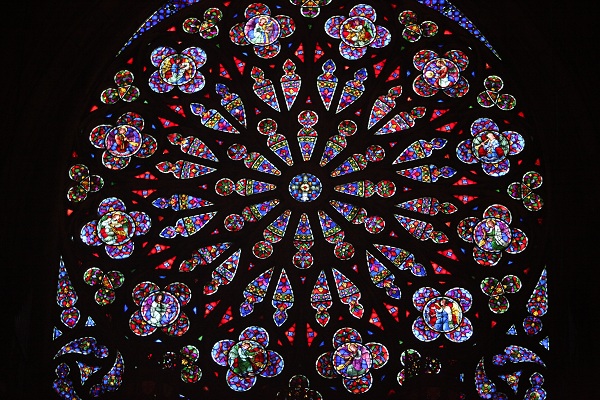
Holy Roman Empire
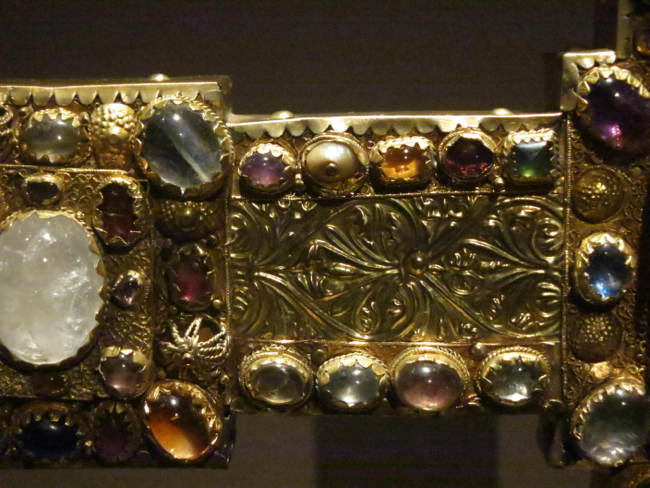
Website Highlights
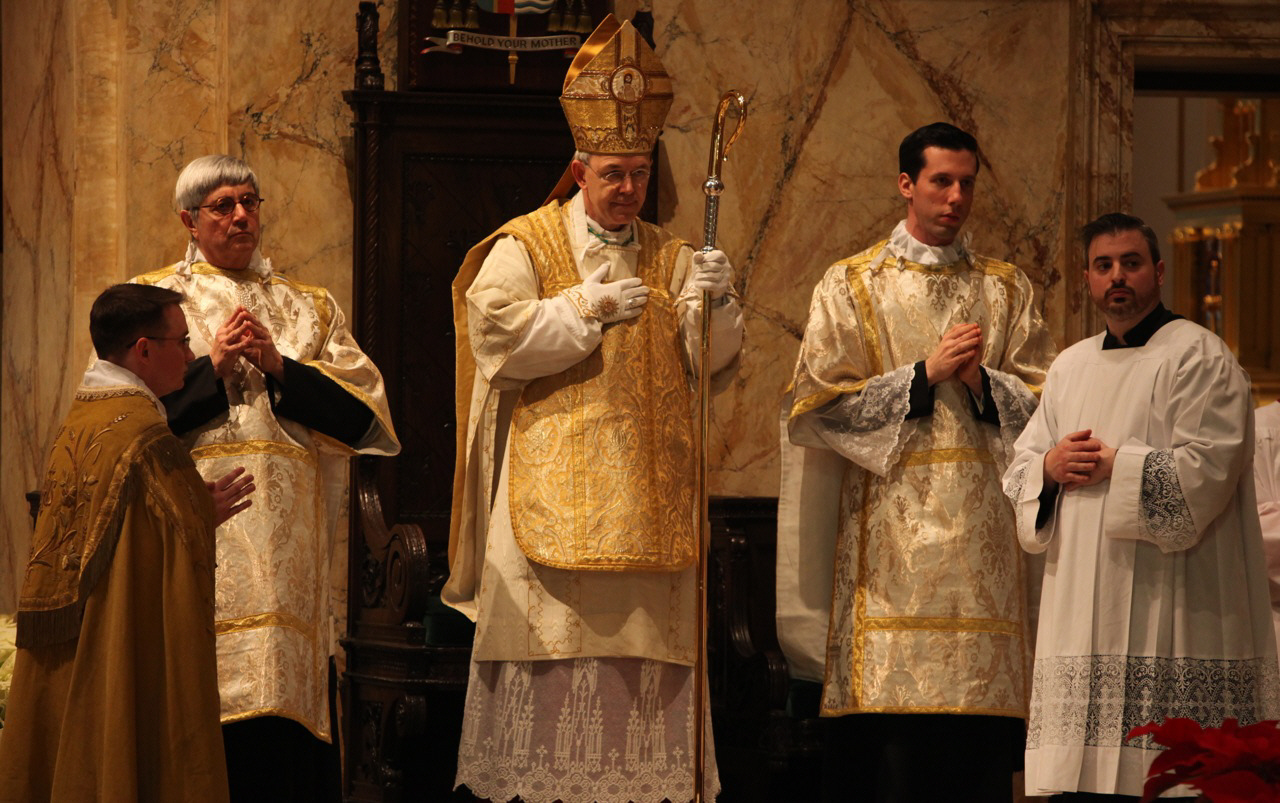
Archives
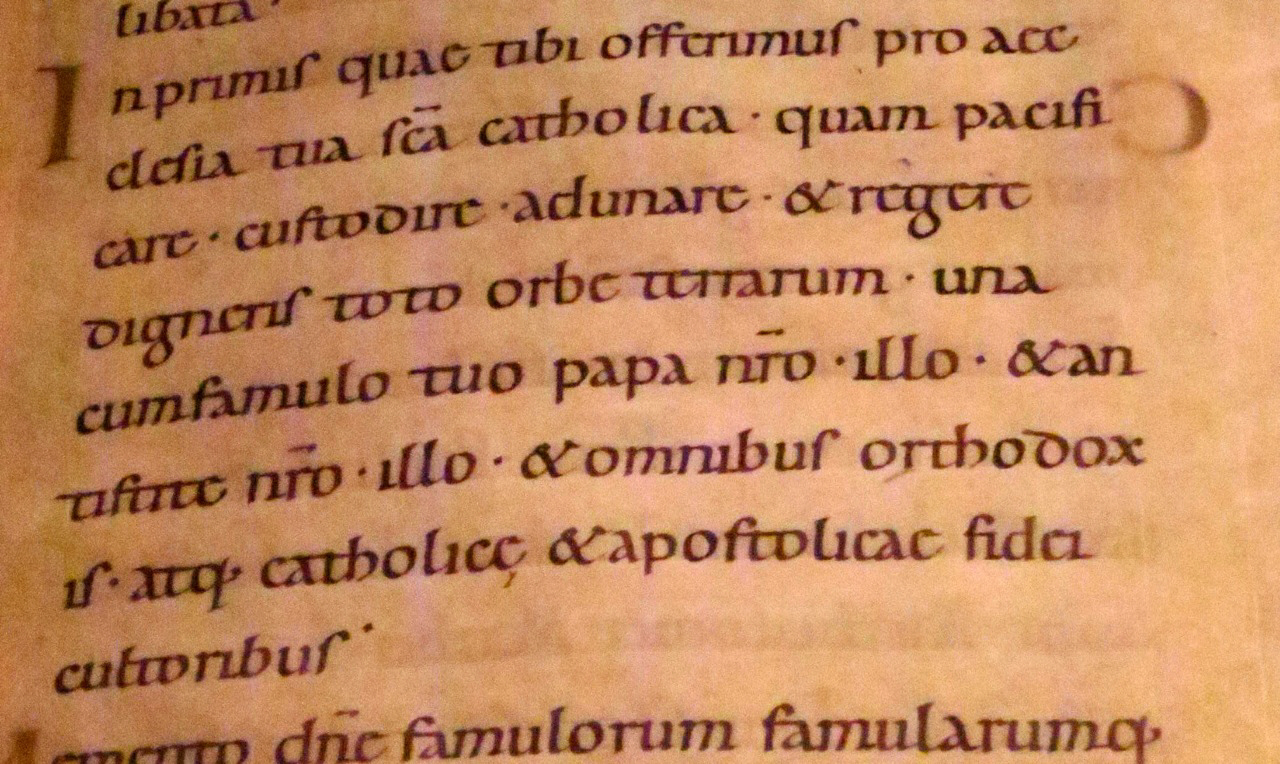
[powr-hit-counter label="2775648"]
